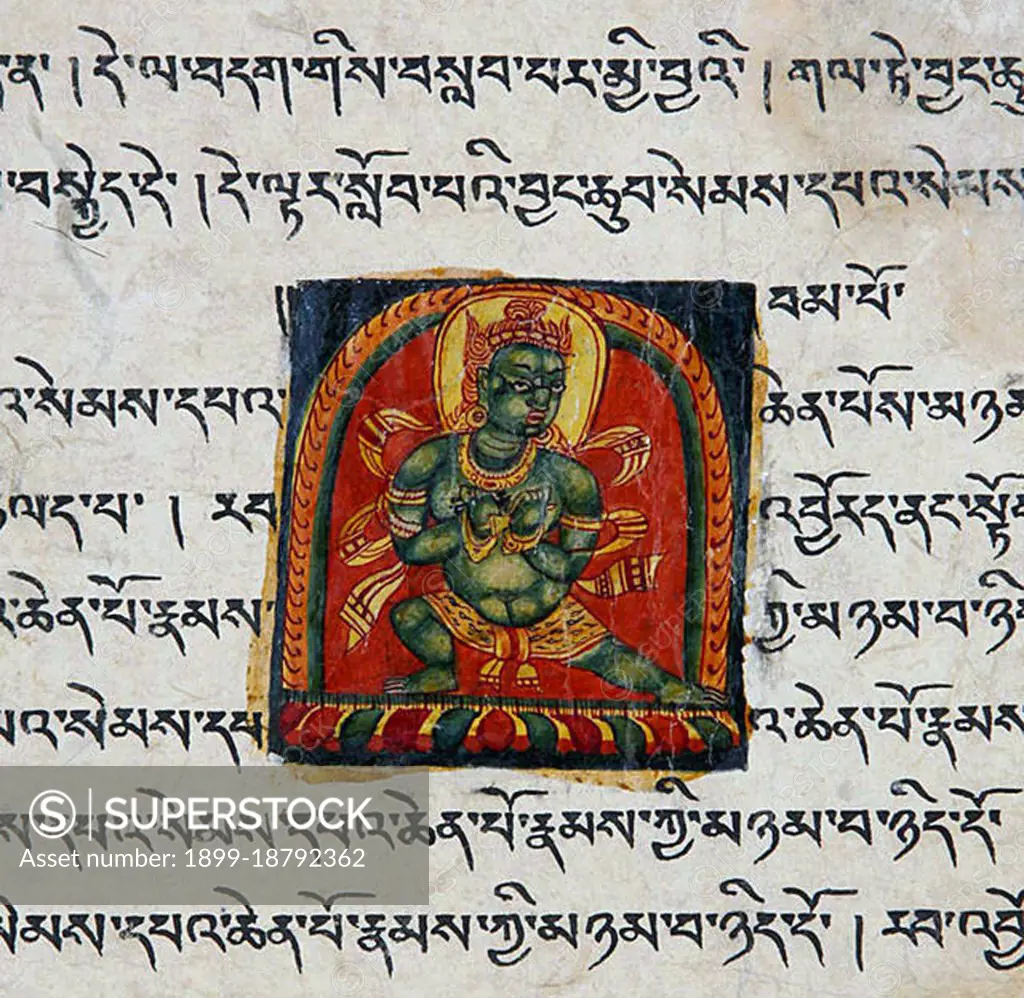The Tibetan alphabet is an abugida of Indic origin used to write the Tibetan language as well as the Dzongkha language, Denzongkha, Ladakhi language and sometimes the Balti language. The printed form of the alphabet is called uchen script (Tibetan: ; Wylie: dbu-can; 'with a head') while the hand-written cursive form used in everyday writing is called umê (Tibetan: ; Wylie: dbu-med; 'headless'). The alphabet is very closely linked to a broad ethnic Tibetan identity. Besides Tibet, it has also been used for Tibetan languages in Bhutan, India, Nepal, and Pakistan. The Tibetan alphabet is ancestral to the Limbu alphabet, the Lepcha alphabet, and the multilingual 'Phags-pa script. The creation of the Tibetan alphabet is attributed to Thonmi Sambhota of the mid-7th century. Tradition holds that Thonmi Sambhota, a minister of Songtsen Gampo (569-649), was sent to India to study the art of writing, and upon his return introduced the alphabet. The form of the letters is based on
SuperStock offers millions of photos, videos, and stock assets to creatives around the world. This image of The Tibetan alphabet is an abugida of Indic origin used to write the Tibetan language as well as the Dzongkha language, Denzongkha, Ladakhi language and sometimes the Balti language. The printed form of the alphabet is called uchen script (Tibetan: ; Wylie: dbu-can; 'with a head') while the hand-written cursive form used in everyday writing is called umê (Tibetan: ; Wylie: dbu-med; 'headless'). The alphabet is very closely linked to a broad ethnic Tibetan identity. Besides Tibet, it has also been used for Tibetan languages in Bhutan, India, Nepal, and Pakistan. The Tibetan alphabet is ancestral to the Limbu alphabet, the Lepcha alphabet, and the multilingual 'Phags-pa script. The creation of the Tibetan alphabet is attributed to Thonmi Sambhota of the mid-7th century. Tradition holds that Thonmi Sambhota, a minister of Songtsen Gampo (569-649), was sent to India to study the art of writing, and upon his return introduced the alphabet. The form of the letters is based on by Pictures From History/Universal Images is available for licensing today.
DETAILS
Image Number: 1899-18792362Rights ManagedCredit Line:Pictures From History/Universal Images/SuperStockCollection:Universal Images Contributor:Pictures From History Model Release:NoProperty Release:NoResolution:4200×4094
Free Research
Can't find the usage you need?
We're here to help!
Phone:+1 866 236 0087
Email: help@superstock.com
or fill out a Contact Form
Research / License Request Form
Can't find the usage you need?
We're here to help!
Phone:
or fill out a Contact Form
Research / License Request Form
Retouching Services
Our MediaMagnet division offers comprehensive retouching services at great rates. For a free quote, please send us an e-mail and we'll get back to you promptly.
Email: Retouching Service
Our MediaMagnet division offers comprehensive retouching services at great rates. For a free quote, please send us an e-mail and we'll get back to you promptly.
Email: Retouching Service
